
How To Choose a Cast Iron Skillet?
The cast iron saucepan is a timeless kitchen classic. It never goes out of fashion. It only gets more beautiful with time. These are not those grimy black woks you only want to cook in the field. Today's cast iron cookware is stylishly designed with various technical innovations, like safety guards, temperature knobs, impact-resistant lids, steam release, and more.
They even weigh less! How is this possible? We tell you.
The Properties Of Cast Iron, Important In The Kitchen
|
Parameter |
Deciphering |
|
Melting point |
1150-1200 degrees Centigrade |
|
Thermal conductivity |
Heats slowly |
|
Heat capacity |
Cools down slowly, allowing it to keep food warm until it is ready to be cooked, even after the power has been removed |
|
Anti-corrosion properties |
Can rust if left uncovered, improperly stored or improperly maintained |
|
Mechanical strength |
Can shatter following a fall, temperature shock. Must be treated with care. |
|
Non-stick properties |
The material has expanded pores that trap grease from the food naturally. This assures high non-stick properties. |
|
The weight |
Weight is substantial, averaging from 3 kg |
|
Average service life |
More than 20,000 cycles |
|
Price |
Cast iron is included in the middle/high price segment. Cost depends on weight/design |
Advantages Of Cast Iron Pans
- The longest-lasting cookware. The stunning durability of the material is legendary. A cast-iron pot has long been a part of every bride's dowry. It was inherited as a gift, which was always faithfully served to the new owner. The metal is highly heat-resistant.
- It not only cooks but also heats. The metal's incredible adaptability to heat stress positively affects the taste of the food. The metal takes a long time to heat up but continues to release heat into the food after the gas is turned off. The simmering process makes the ingredients tender and supple.
- Gains non-stick properties during the cooking process. The naturally porous cast iron absorbs oil and fat from each new dish. Full-bodied non-stick protection made of natural ingredients is formed on the surface.
- Can be used on any type of cooker. A saucepan made of cast iron has a flat bottom. If reinforced with an additional ferromagnetic disc, it can be used not only on gas cookers. It's suitable for induction, electric, and glass ceramic hobs.
- Suitable for a variety of cooking operations. One such multi-purpose pan successfully replaces several highly specialized pots. You don't have to buy a separate duck bowl, baking tray, and standard cooking pot. Cast iron can do the job all by itself. Read on in the next block.
How To Use Cast Iron Pots
The best cast iron pots are multipurpose. You can cook all sorts of food in it. Potatoes, carrots, and other vegetables are cooked to a thick pulp. Meat, poultry, and fish retain their natural juiciness but melt in your mouth. Mushrooms get infused with the fragrance of spices and fresh herbs. And the most common cereals turn into treats worthy of kings. Don't believe it? Try boiling buckwheat.
Here are some of the Culinary operations with which cast-iron cookware copes with a bang:
- Cooking over gas or induction hobs;
- Stewing ingredients in their own juices, sauces, and stock;
- Stewing in the heat of a heated cooking cabinet until the food is cooked;
- Baking in ovens and Russian ovens.
Varieties
1. Small cast iron pot- This is the prototype of the Russian cast iron pot. It is a metal pot with a narrow bottom and an expanding body, with a volume from 1,5 and more. It was used in a cooker. The pot was put on fire with a grip. From it, the pot inherited the shape, thick walls, and volume up to 1-1,5 l. Today's models may have a metal lid that retains heat and solid cast-iron handles.
2. The classic saucepan has a more conventional look. The volume is 2-5 liters, depending on the needs. This kind of cookware is used on the cooker and occasionally in the oven. The details are adapted to regular use. Round body, two side knobs, and glass lid with steam outlet.
3. The sauté pan is a cross between a saucepan and a frying pan. It has a wide base from 20 to 32 cm in diameter. High sides from 8 cm. And a pair of side handles. It's particularly well suited for stewing and cooking larger portions.
4. The cast-iron cauldron is a special round-bottomed cooking utensil for cooking over an open fire. It has a suspension and solidly made handles. Considered to be an outdoor cauldron. The exception is the domestic cauldron.

Types Of Metal For The Pots And Pans
1. Cast iron - This is the traditional material that has been in use since the last century. Characterized by its impressive weight, the cast-iron pot is a very sturdy cookware. It has a rough surface that is easily recognizable to the touch. The wide pores make it necessary to prepare it for use. After purchase, the casing is washed, salted, and coated with oil to form the first non-stick layer.
2. Lightweight cast iron is an innovative material. It is approximately 50% lighter than conventional cast iron. This makes the walls of the pot thinner. It weighs less and is more mobile in your kitchen. It's still the same metal you can use on the cooker and in the oven, Only it looks much more attractive. It is coated with a protective non-stick layer. Light-weight cast-iron cookware is a striking design cookware and a veritable gem in the kitchen.
3. Enameled cast iron is another kind of cast iron. It doesn't vary in weight, but you'll know it immediately. It has a smooth glossy coating on the inside or outside and is often colored. For example, green, turquoise, red, etc.

What Is A Cast-Iron Non-Stick Pan?
Being used to the fact that the material has natural protective properties, you may wonder: why cover it with a factory protective layer? However, coated cast-iron pots are at the top of cookware sales.
The additional protective layer helps;
- Prevents the metal from coming into contact with the ingredients in the dish;
- prevents food from sticking to the rims and bottom;
- Reduces the consumption of oil during cooking;
- Extends the life of the pan;
- Makes the pan easier to care for.
Coated pans need not be scrubbed with a metal brush to clean them. Nothing sticks to it. Such cookware does not need to be prepared for use. It doesn't need to be fired or oiled. The pot is ready to use immediately after purchase. Just remove the packaging, and wash off the shipping grease. The safest models have a non-stick coating of one of three types.
1. Ceramic coating. Has a 100% natural composition of clay and sand. It is safe, ecological, and highly non-stick. Does not contain PFOA. It can also withstand heat up to 400 degrees Celsius and last 1-3 years.
2. Stone coating. Safe to use with crushed marble and granite. It has small stone particles that give it a rough surface. Good for meat, poultry, and fish. It’s durable and does not contain PFOA
3. Enameled coating. Made from vitrified clay. When melted, it gives the pot a glossy shine. Enamel easily takes any color, fills the natural pores of metal evenly, and withstands heat up to 300 degrees. The cast iron enameled pot is suitable for stovetops and ovens.

All coatings are odorless. They do not change the taste and aroma of the food. Read more about the different types of protection for your kitchen utensils.
The Important Thing About The Construction Of Modern Kitchen Utensils
Buy a cast-iron pot with a lid - it's a great value for your home. It makes food tasty and healthy. The material retains all the vitamins and minerals of the ingredients, giving them a delicate, thick consistency. Today it has been enriched with innovative technical details, in addition to the protective coating, including;1. Induction bottom. Turn the pot upside down. If you see a metal disk at the base of the pot, it's an induction pot. It has a thick ferromagnetic disc made of an alloy of several metals embedded in the bottom. The outside is made of stainless steel. Inside, there's aluminum which increases the heat conductivity. This pot is suitable for all types of cooker hobs.
2. Heat-resistant handles. If the pot is intended to be baked in the oven, the handles are made of cast iron or stainless steel. Metal has good tolerance to high heat. Heat-resistant plastic is also used for pans which are used on household cookers. Bakelite, which doesn't melt or smell, is also widely used.
3. The lid is made of impact-resistant glass. This is a detail that makes the pot even more comfortable to use. A cast-iron pot with a lid is comfortable. The safety screen is made of extra-thick clear glass. The edges are strengthened with a steel rim, and the base provides a hole for steam escape.
What To Cook In A Cast-Iron Pot
- Strong soups. Check soups, borscht, soups with lamb, Georgian, Uzbek and Tajik soups.
- Roast beef, roast game. Roast beef of elk, duck with apples, pork with oranges, and Christmas goose in spices.
- Fish specialties and seafood. Fish chowder, pike-perch, carp, or sterlet in a marinade.
- Pumpkin dishes. Pumpkin casserole, pumpkin puree, pumpkin soup with cheese, and numerous Halloween dishes made from pumpkin pulp.
- Porridge and cereal dishes. Pilaf, Lagman, shurpa, chickpea soup with smoked meat.
- Stewed vegetables and potatoes. Potatoes stewed with meat, vegetable stew, ratatouille, various hodgepodge of soups, and vegetable mix-based stews.
How To Take Care Of Cast Iron
A cast-iron pot is easy to buy and requires proper care. The material does not lose its flawless appearance and high-performance characteristics. It serves for a long time without any complaints. Here’s how to take care of your pots;
- Preheat the uncoated cast iron. Heat it up on a hob or in an oven with salt, and oil it to form the first non-stick layer.
- Coated cast iron does not need to be fired. After purchase, the pan should be thoroughly washed and wiped dry.
- Wash it by hand. The composition of tablet detergents for automatic dishwashers destroys the natural non-stick layer. This exposes the metal and increases the risk of rusting. The ideal option is to wash by hand with a soft sponge and gel detergent.
- Keep the pan dry. Residual water penetrates the micro-cracks and starts the corrosion process.
- Do not store cooked food in the container. The natural sap of the food leads to similar consequences.
- Mix ingredients with wooden or silicone spatulas. They do not leave deep scratches in the non-stick layer.
- Store the pan empty. Do not put any other cookware inside. Sharp edges injure the surface and reduce the non-stick properties.
- If chipped/scratched, treat the body with oil. Uncoated cast iron should be heated with salt. Coated cast iron should be heated on the cooker. Then lubricate with linseed oil or vegetable oil.
How To Clean A Cast-Iron Pan
1. Boiling. This method is suitable for removing small pieces of food from non-stick pans. Fill the pan with water and bring it to a boil, possibly with a drop of gel detergent. In hot water, everything comes off on its own. Clean the outside of the non-stick frying pan with a mild baking soda paste.
2. Use baking soda. You can use this method to clean a cast iron pan if the induction bottom or the outer enamel coating is blackened. For the former, dilute a tablespoon of baking soda with water to a pulp, apply it to the bottom, and rub it with a soft cloth. Place the container in a baking soda solution to remove dirt from the enamel. Use 500 g of baking soda per 5 to 6 liters of water is needed. Bring the solution to a boil, turn off the gas and remove the pan after 2 hours.
3. With activated charcoal. Will help owners of uncoated pots. Grind 10 charcoal tablets into powder. Add water to make a thick porridge. Scrub the soiled areas, let stand and rinse off. You can also scrub with a coarse metal brush. Afterward, make sure to treat the surface with oil.
Fissman Cast Iron Saucepans
For more than 10 years, the brand has been producing top-quality cookware. The range includes pots made of cast iron, light-weight, and enameled cast iron.
Some have natural non-stick properties, while others are protected by natural ingredients such as ceramics and stone. Heat-resistant handles thick glass lids, a steam outlet, and a ferromagnetic bottom. All these features make everyday cooking easier, and the pots are easier to care for. The table below shows the most popular FISSMAN cast iron saucepans. The products have a lifespan of more than 7 years.
Top Brand Models
|
Model |
Description |
|
- Cast iron pot with enamel coating; - Light-weight cast-iron; - 24 cm diameter - XylanPlus non-stick coating; - Induction bottom; - Wood handles; - Shatterproof glass lid; - For all types of cooker. |
|
|
- Coated cast iron pan; - Light-weight cast-iron; - 28 cm diameter - XylanPlus non-stick coating; - Induction bottom; - Wood handles; - Shatterproof glass lid; - For all types of cooker. |
|
|
- Large cast iron saucepan; - Light-weight cast-iron; - diameter 32 cm - XylanPlus non-stick coating; - Induction bottom; - wood handles; - Shatterproof glass lid; - For all cooker types. -250 ml saucepan -250 ml batch pan |
|
|
Portion saucepan 250 ml |
- cast iron baking pan; - Cast iron; - 10 cm diameter - induction bottom; - stainless steel handles; - Lid made of cast iron; - For all types of cooker. |
|
Cauldron 8 l |
- Cast iron; - 35 cm diameter - Induction bottom; - Cast iron handles; - Lid made of cast iron. |
|
- Cast iron saucepan; - Light-weight cast-iron; - 28 cm diameter - XylanPlus non-stick coating; - Induction hob; - Wood handles; - Shatterproof glass lid; - For all cooker types. |
Shopper Testimonials
"Thick walls, thick bottom, heavy and fundamental saucepan. The lid fits tightly. Distributes the heat evenly, perfect for slow braising meat and vegetables, nothing burns or sticks. The food is different, tasty, and most importantly, healthy."
"Takes cooking to a new level. It's a thrill! A dream I have had for a long time.
"The price bite at first, but on buying it after I started cooking - not a single regret. There are 5 of us in the family, and it's good enough for me. I often cook steaks (no burning, minimal oil); we all love meat".
"Nothing burns, very good for cooking almost any dish."
"The sauté pan is great, deep. The quality is good."
"Allows you to cook for the whole family, saving time, effort and energy as the walls are thick and there is good energy efficiency. Food doesn't burn, easy to clean."
Go to the online shop to view the entire collection of FISSMAN cast iron saucepans.
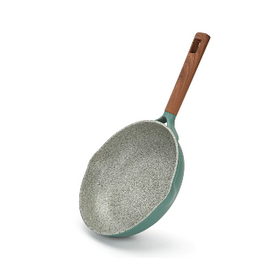
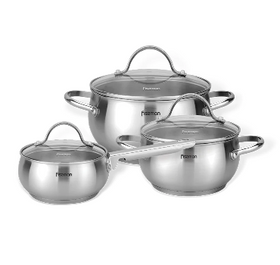
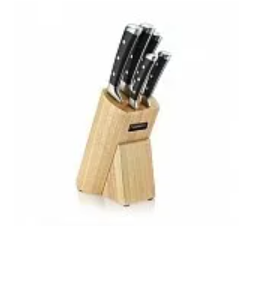
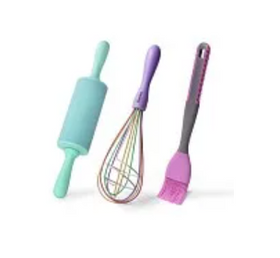

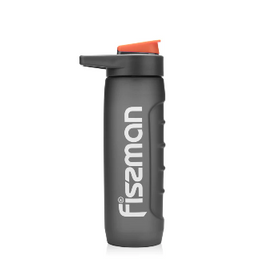
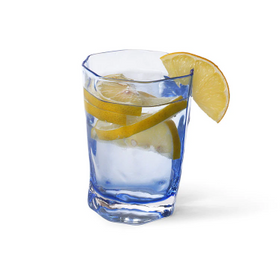




























Leave a comment